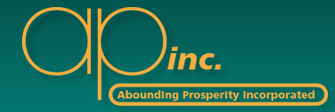Putting Intentional Advocacy Into Practice: Two Examples
By Michael Everett, MHS | May 29, 2018
Project Director, ETR
I believe in the power of advocacy. It fits nicely within my belief system. But more than that, I’ve seen the power of advocacy at work. This is a strategy that can transform and empower organizations.
In my earlier post about our Intentional Advocacy (IA) project, I described the ways our team boosted advocacy strategies in a group of Southern HIV organizations through resources, training and technical assistance. I also mentioned our “Jewel of a Resource,” the self-paced e-learning course Advocacy in the South. This free course focuses specifically on the Southern experience, but I’m confident it will be useful for any service organization seeking to improve its outreach and delivery.
Today, I’m pleased to share two stories with you from organizations that participated in the Intentional Advocacy project. One of the primary tenets of this work is that the interventions are effective because they are tailored to the specific needs and interests of the organization. No two organizations will choose the same path or seek the same outcomes.
These examples demonstrate that principle well. They are very different organizations and they put advocacy strategies to work in distinct ways.
Abounding Prosperity
Abounding Prosperity is a nonprofit that was founded to respond to social, economic and health disparities affecting Black men and their families in Dallas County, Texas. They were founded in 2005, and they bring an emphasis to gay, bisexual and male-to-female transgender individuals. This includes programs that address HIV prevention and services.
Within the IA project, their goal was to develop a communications and marketing plan that would allow the agency to attract more allies and potential partners for their sexual health and HIV-related advocacy work. When we asked them how the IA project had influenced their work, they shared several ways in which they have enhanced accountability and improved advocacy.
Abounding Prosperity in Their Own Words: Boosting Accountability and Advocacy
Accountability has improved the advocacy of Abounding Prosperity in a few ways. On a micro level—from the employee point of view—our staff has started to be more strategic in outreach, partnerships, and their individual and collective intent in terms of both job-related goals and fulfilling the mission of the agency. They are more intentional about professional and social endeavors. The staff also make sure they are always advocating for their individual social networks.
Here are some examples.
Example 1: Asking more questions
Our transgender specialist has started to ask more questions in certain settings and forums related to trans rights. She asks about what local and regional jurisdictional decisions will mean for her individual social network, as well as how she can assist in implementing change.
Example 2: Taking notice of policy
Our YMSM (Young Men who have Sex with Men) specialists on staff are taking more notice of policy implementation and the outcomes of federal laws and congressional debates. Not surprisingly, they keep track of the ways these relate to health care. But they are also following their impact on minority single parent families.
Both of these staff members grew up in single parent households. They recognize that the dynamics of such upbringing have direct impact on social and sexual risks for MSM in their age group (14-29). As a result, they have started taking more accountability for and paying more attention to what they say, do, and advocate for.
Example 3: Expanding our strategic plan
Collectively as an agency, we completed the first phase of our strategic plan for advocacy and are expanding it to include goals and objectives for the next six months. Accountability from the agency as a whole has improved due to the IA project. We are applying the principles and strategies to more of the community needs within our mission, and we are expanding services.
Example 4: Greater community accountability
We have begun using our client satisfaction surveys in new ways. We ask clients to suggest what the community needs. We ask them what we can advocate for in terms of the funding we seek, our partnerships, etc. We understand that all money is not good money, and all partnerships are not good partnerships. Now, more than ever, our agency is taking into account our responsibilities—we know we must hold the agency accountable in every aspect of how we serve the community.
BASIC NWFL
BASIC NWFL is a community-based organization dedicated to assisting and aiding those living with HIV/AIDS, their families and friends. They are located in northwest Florida, and their motto is, “Compassion Without Judgment.” They offer education on HIV and substance use, build awareness, and provide HIV testing. Volunteers play a major role in governing the organization and delivering the services offered.
Through the Intentional Advocacy Project, BASIC NWFL set a goal of moving beyond local partnerships. They wanted to support board and staff in their efforts to develop strategies to market and promote the agency more broadly and to build more regional partnerships. We asked them to reflect on the role of accountability in advancing advocacy or setting advocacy goals. They shared some examples of the applied skills and advancements that resulted from the training and technical assistance they received through the Intentional Advocacy project.
BASIC NWFL in Their Own Words: Empowered Board Members, Advocacy Coalition and More
BASIC was thrilled to be part of the Intentional Advocacy program. This process was so helpful to our organization, and we want to be in the know about any additional capacity-building opportunities that can help further enhance our quality of service.
Our organization has made several changes to bring greater commitment to advocacy among volunteers and staff, along with the skills and knowledge to follow through.
Here are some examples.
- Board members have improved their management/leadership skills.
- Staff members have improved their communication skills. They have learned how to use different social media platforms—we can now go beyond website, newspaper, and TV and radio PSAs. Our social media strategies allow the agency to reach out to clients and target populations, and to promote our programs, including our current advocacy program.
- BASIC has identified and assigned a staff member to be a Communication Assistant. This person is responsible as a focus person for our communication/advocacy related-programs.
- The agency identified some of the weaknesses of our social media efforts and responded to strengthen these efforts. We are working with a web developer/webmaster to help upgrade the agency's website and Facebook page.
- Lessons and skills learned from the Intentional Advocacy program will enable BASIC to continue to successfully implement its current and future advocacy programs. Recently, BASIC was selected by Southern AIDS Coalition to be among its LEAD Academy Cohorts for its Advocacy Project, consisting of six Southern agencies. Therefore, this will be another great opportunity for BASIC to apply experience and skills from the Intentional Advocacy program and to improve its advocacy efforts.
- We have formed a solid Advocacy Coalition consisting of community partners and people living with HIV. They are developing Advocacy Campaign materials and a Facebook page.
- One of our Program Coordinators and a Board Member attended AIDSWatch for the first time, and second time, respectively. AIDSWatch is the nation’s largest annual constituent-based national HIV/AIDS advocacy event.
- We’ve identified opportunities to schedule advocacy engagements with local elected officials, especially one of our state representatives who just moved his office two doors down from BASIC!
I hope you’ll consider diving into some of the resources we developed as part of this project (several were listed in my previous post). Through our webinar series, you can hear directly from the organizations that participated in the project. If you take our e-learning course Advocacy in the South, you can put some of the same tools to work for your organization.
If you’re satisfied with things as they are, these resources may not be especially useful for you. But if, like me, you’re ready to see some changes in the ways we’re addressing HIV in this country, Intentional Advocacy is one of the best avenues you can choose.
Michael Everett, MHS, is a Project Director at ETR. He can be reached at michael.everett@etr.org.







